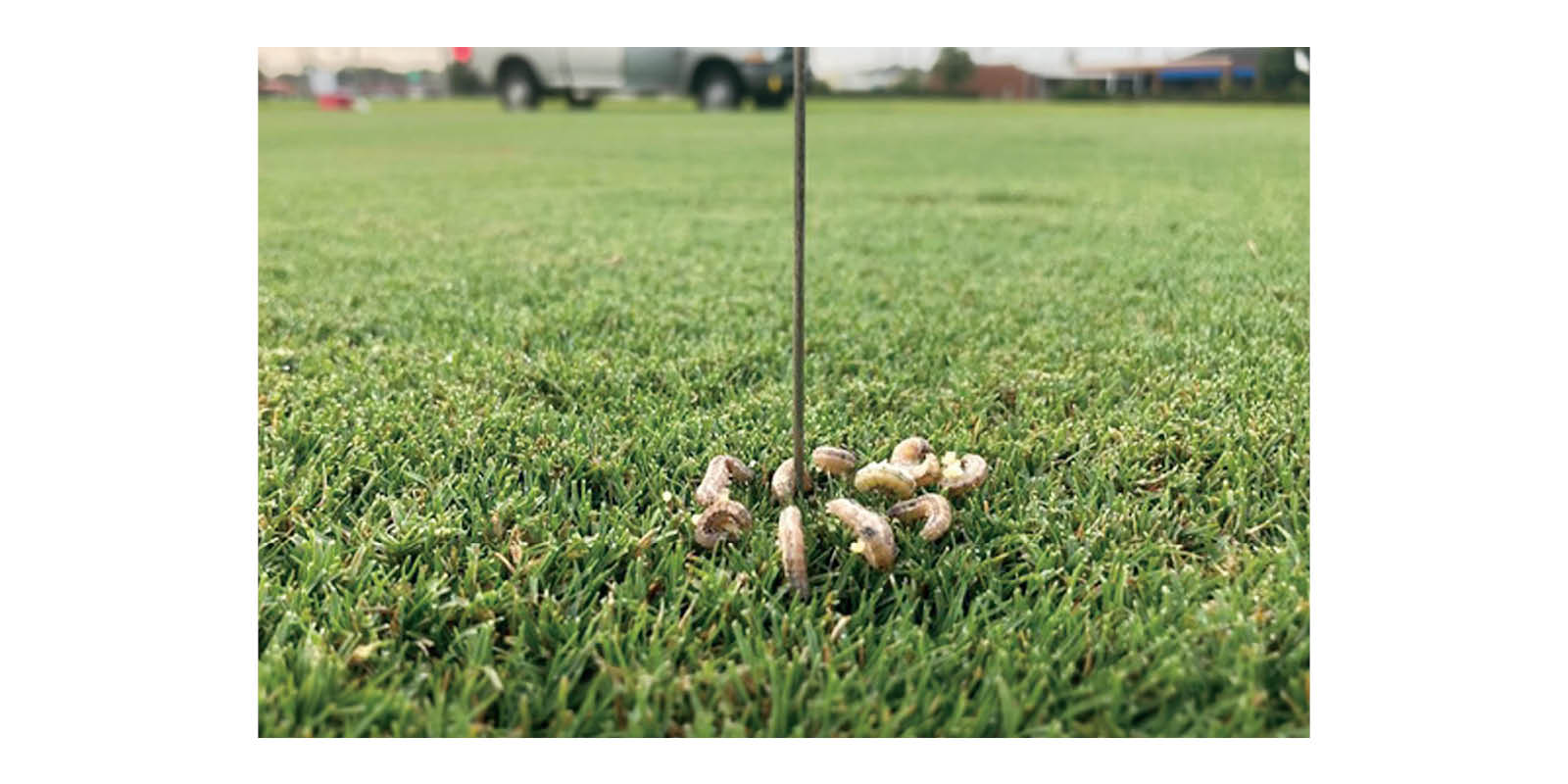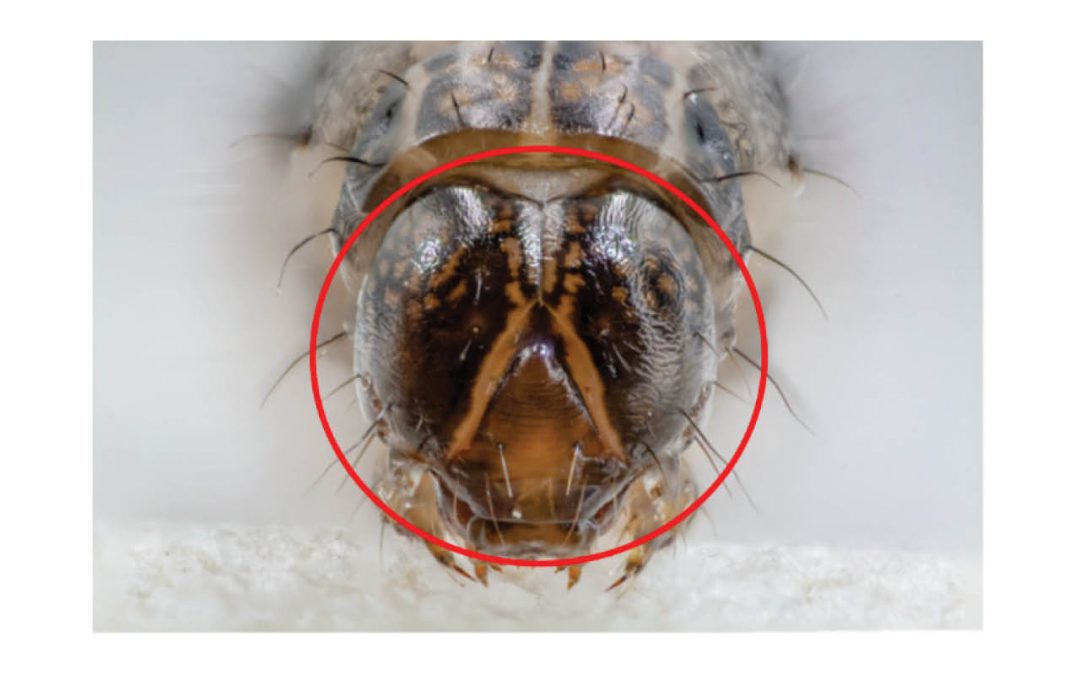The destructive pests – Fall Armyworms – have again started to wreak havoc on lawns along the east coast of Australia.
Earlier this year the Fall Armyworms hit Australian shores for the first time with initial siting’s in northern Queensland (QLD) and then down into the State’s south-east.
Although Armyworms are commonly known as agricultural crop pests, the Fall Armyworm is now an emerging threat to turf farm production.
It is thought that the Fall Armyworms moved to Australia from the Torres Strait Islands following cyclone activity during February.
The larval stage of the Fall Armyworm Moth is a pest that poses a serious Biosecurity threat in Australia. They initially feed on leaves, creating pinholes and windows in leaf tissue – giving leaf margins a tattered appearance and discolouring the overall appearance of the turf.

In large populations, Fall Armyworms can consume all the foliar tissue available and crawl in “armies” to nearby turf sites. After the larvae feed for 2-3 weeks, they dig into the soil and pupate. Within two weeks, a new population of moths emerges. Several generations can occur each year and earlier infestations tends to occur following a mild winter.
The QLD Consultative Committee on Emergency Plant Pests has determined that it is not technically feasible to eradicate Fall Armyworm from Australia as it has never been eradicated anywhere else in the World.
In Australia, the Australian Pesticides & Veterinary Medicines Authority (APVMA) recently issued an emergency use permit for the control of Fall Armyworm in Turf Production – Permit No: PER89290. This permit held by Horticulture Innovations Australia is for use by persons generally.
This permit allows Syngenta’s Provaunt (containing 200g/L Chlorantranilprole as the active constitute) to be specifically used for Fall Armyworm in turf production at a rate of 750ml per hectare in all states and territories except Victoria.
Victoria is not included in this permit, as their Control-of-Use legislation means a permit is not required to legalise this off-label use in the State.
Key critical comments on the permit are:
- Regularly scout crops to monitor for eggs and larvae.
- Treat when pests appear, targeting eggs at hatch or small larvae (prior to third instar stage) before the pest becomes entrenched.
- Follow directions on the registered label and use the higher rates listed when targeting Fall Armyworm.
Growers across the state have also been asked to report any potential sightings of the moth and its larvae.
Turf Agronomist and expert Peter Kirby stressed that the Fall armyworm was a highly destructive pest and that they’ve caused significant economic losses overseas.
“Adults are highly mobile and quite capable of travelling large distances quickly,” Peter added.
“Their migration rate is remarkably fast, estimated at almost 500 kilometres per generation. Growers especially in QLD need to be vigilant and regularly scout their crops for any signs.”

Fast Facts – Fall Armyworms
- Most active during late summer and early autumn
- The egg is dome-shaped and measures about 0.4mm in diameter and 0.3mm in height
- The number of generations a moth has in one year varies on climate but in her life span a female typically lays 1500 eggs
- Eggs hatch into larvae within 2-5 days
- As the eggs hatch, the larvae feed on the remains of the egg mass then drop to the soil surface to search for food – such as turf
- Larvae stage lasts for 14 to 30 days
- To distinguish the Fall Armyworm for other armyworm species, investigate the head which has a predominant white, inverted Y-shaped suture between the eyes
- Unlike other caterpillar species the Fall Armyworm will feed day or night but are usually most active early in the morning or late in the evening
- The larvae pupate underground for about 10 to 21 days
To download a permit https://www.horticulture.com.au/hort-innovation/news-events/fall-armyworm-update-and-alert/

